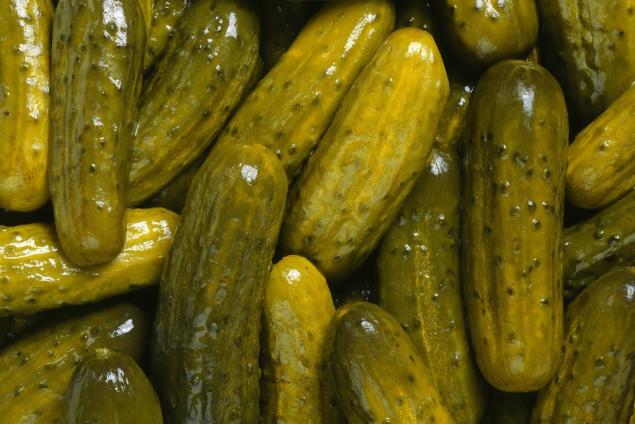543
Sneezing in the light and another five fun genetic traits
Initially, the scientists decoded the genome to find the cause of some diseases (so - their prevention and treatment). But decades of careful study of human DNA have led to the fact that there are funny signs in your account "Atlas" genetic test that prolong life except that cause laughter.

The smell asparagus in urine
People are divided into two types: those who distinguish the strange smell of urine after ingestion of asparagus, and those who do not discriminate. This feature has been noted for a long time, at the beginning of the XVIII century, and has set scientists the question: what is the reason - the inability to catch the smell, or the body's inability to process the asparagus in such odorous substances
. To clarify this question, the researchers conducted a series of pretty funny, as you might imagine, scientific experiments and made a discovery. It turned out that both hypotheses are correct, and the presence of strange odors in the urine after the asparagus - a complex of hereditary traits. Distinguishing smell depends on the characteristics of the metabolism of asparagus acid, and from the ability to distinguish between the smell of sulfur-containing compounds methanethiol.

earwax type
Genetic Europeans rarely comes to mind it is, but wax is different. Liquid and sticky or hard and dry - also depend on genes. If the bathroom you should jar with cotton sticks and deodorant, you will most likely winner of the dominant gene variant ABCC11.
And here deodorant? It appears that the type of wax is also associated with perspiration. And the owners of the recessive allele ABCC11 to dry earwax in a gift receive a reduced sweating (and hence a smaller number of bacteria that cause the unpleasant smell). Most of the Asian population - owners recessive gene variant ABCC11 so much less popular in this region deodorants
.
Sneezing on
light Remember as a child when my mother pulls the curtains in the morning, and penetrated into the room light, you immediately sneezed? This is not because the Soviet curtains so dusty. That you have this polymorphism.
This habit is called the photic sneeze reflex. This is due to the fact that a bright light through the eyes of photoreceptors causes a reflex stimulation of the nerve endings of the nasal mucosa, and you sneeze. A study in 2010 showed that a sign is hereditary and occurs in 18-35% of people.
There is evidence that antihistamines reduce light sneezing.

Absolute Pitch
With access to genetic studies, scientists began to have fun and to check up everything (especially the "outstanding" ability). They gathered together a family of musicians with perfect pitch and conducted genetic testing. Oddly enough, it turned out that there is a correlation between heredity and perfect pitch. And between absolute pitch and the so-called synaesthesia - the ability to "see" sounds and colors to distinguish them. For example, the first octave will be brown.

Fifty shades of gray
While outstanding musicians see music, at least some of the outstanding people do not see the blue color spectrum. This is the most rare form of color blindness is inherited as an autosomal dominant manner. People with a dominant allele of gene OPN1SW see the logo of the "Atlas" biomedical holding such:

For dessert - when pulling on solёnenkoe
The love of pickles - is not just a temporary insanity during gestation pregnancy, and genetic trait. It defines PKL3 gene, which encodes a receptor of an eight, is responsible for determining how pleasant salty taste.
In general, nothing wrong with "salty" version of this genetic trait not. Just try to get into a jar of pickles in the morning and on an empty stomach.

PS Very attentive reader will notice the bases in this post - and receive a tasty gift from the genetic test team "Atlas". Winners will be announced 24 hours in an update to the post.
Source: geektimes.ru/company/atlasbiomed/blog/279288/

The smell asparagus in urine
People are divided into two types: those who distinguish the strange smell of urine after ingestion of asparagus, and those who do not discriminate. This feature has been noted for a long time, at the beginning of the XVIII century, and has set scientists the question: what is the reason - the inability to catch the smell, or the body's inability to process the asparagus in such odorous substances
. To clarify this question, the researchers conducted a series of pretty funny, as you might imagine, scientific experiments and made a discovery. It turned out that both hypotheses are correct, and the presence of strange odors in the urine after the asparagus - a complex of hereditary traits. Distinguishing smell depends on the characteristics of the metabolism of asparagus acid, and from the ability to distinguish between the smell of sulfur-containing compounds methanethiol.

earwax type
Genetic Europeans rarely comes to mind it is, but wax is different. Liquid and sticky or hard and dry - also depend on genes. If the bathroom you should jar with cotton sticks and deodorant, you will most likely winner of the dominant gene variant ABCC11.
And here deodorant? It appears that the type of wax is also associated with perspiration. And the owners of the recessive allele ABCC11 to dry earwax in a gift receive a reduced sweating (and hence a smaller number of bacteria that cause the unpleasant smell). Most of the Asian population - owners recessive gene variant ABCC11 so much less popular in this region deodorants
.

Sneezing on
light Remember as a child when my mother pulls the curtains in the morning, and penetrated into the room light, you immediately sneezed? This is not because the Soviet curtains so dusty. That you have this polymorphism.
This habit is called the photic sneeze reflex. This is due to the fact that a bright light through the eyes of photoreceptors causes a reflex stimulation of the nerve endings of the nasal mucosa, and you sneeze. A study in 2010 showed that a sign is hereditary and occurs in 18-35% of people.
There is evidence that antihistamines reduce light sneezing.

Absolute Pitch
With access to genetic studies, scientists began to have fun and to check up everything (especially the "outstanding" ability). They gathered together a family of musicians with perfect pitch and conducted genetic testing. Oddly enough, it turned out that there is a correlation between heredity and perfect pitch. And between absolute pitch and the so-called synaesthesia - the ability to "see" sounds and colors to distinguish them. For example, the first octave will be brown.

Fifty shades of gray
While outstanding musicians see music, at least some of the outstanding people do not see the blue color spectrum. This is the most rare form of color blindness is inherited as an autosomal dominant manner. People with a dominant allele of gene OPN1SW see the logo of the "Atlas" biomedical holding such:

For dessert - when pulling on solёnenkoe
The love of pickles - is not just a temporary insanity during gestation pregnancy, and genetic trait. It defines PKL3 gene, which encodes a receptor of an eight, is responsible for determining how pleasant salty taste.
In general, nothing wrong with "salty" version of this genetic trait not. Just try to get into a jar of pickles in the morning and on an empty stomach.

PS Very attentive reader will notice the bases in this post - and receive a tasty gift from the genetic test team "Atlas". Winners will be announced 24 hours in an update to the post.
Source: geektimes.ru/company/atlasbiomed/blog/279288/























